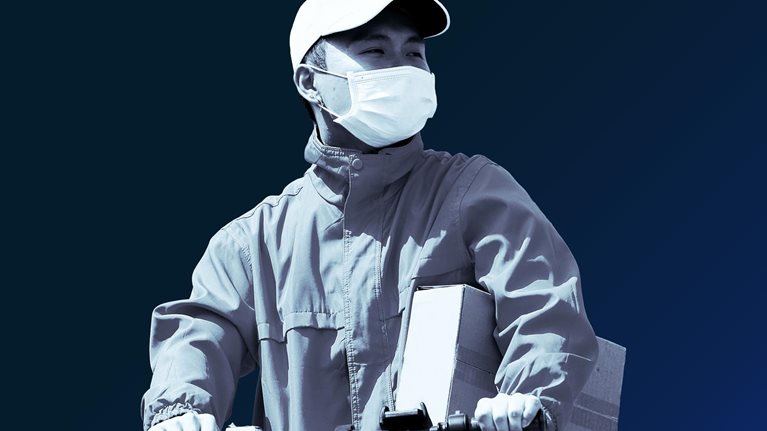Pandemics hit the most vulnerable people and societies hardest. COVID-19 is no exception. Emerging Asia is particularly vulnerable to both the public-health challenges of the pandemic and the economic consequences of failing to contain it. The region’s countries have large populations, limited hospital capacity, and acute shortages of medical supplies and equipment. The number of COVID-19 cases and fatalities is rising there. It is essential to “flatten the curve.”
Yet this goal calls for measures that not only have serious economic consequences but can also cause extreme hardship. The most vulnerable women and men in emerging Asia include migrant workers, casual and uncontracted workers, and people who rely on their daily cash earnings to buy food. Hundreds of millions live this reality their whole lives. They often have neither savings to cushion them against sustained economic disruption nor employment protections and health insurance.
As financial markets reacted to the pandemic’s growing scale, financing conditions changed quickly, triggering a flight of capital from emerging Asia. These countries may struggle to finance relief and stimulus packages on anything like the scale of those announced by the governments of more developed economies. The size of the stimulus packages of Australia, Singapore, the United Kingdom, and the United States, for example, range from 12 to 25 percent of GDP. The measures announced by most emerging economies fall well below 5 percent of GDP and some below 1 percent.
Finally, some of these economies lack the institutional capacity to deliver relief to the people and businesses it’s intended to support. This is challenging enough for developed countries, which can use banks, tax administrations, and social-welfare agencies to distribute relief. Emerging economies still have a very large number of unbanked people—66 percent of the population in Indonesia and 77 percent in the Philippines—narrow tax bases, and limited social-welfare systems. They will have to rely on other channels, such as smartphones, to distribute money and on other forms of assistance, such as food parcels.
In a recent McKinsey article, “Safeguarding our lives and our livelihoods: The imperative of our time,” we examine possible scenarios for the near future. In emerging Asia, the most optimistic outcome would be a deep recession in the second quarter of this year, followed, perhaps, by a recovery at the end of it or early 2021. In a more pessimistic scenario, the recession would last for two to three years across most of the region. Even worse scenarios are possible.
How can governments respond? McKinsey’s perspective on how to navigate through the crisis is based on five horizons: resolve, resilience, return, reimagine, and reform.
Many governments in emerging Asia remain in the resolve phase. They are operating in crisis mode, grappling with the logistics of locking down large swaths of their populations. Their priorities include tracking the spread of the virus, assessing and augmenting their healthcare capacity to deal with it, and sourcing drugs and equipment.
India’s data infrastructure, for example, has underpinned the establishment, in dozens of cities, of “nerve centers” serving as command posts to monitor the spread of the virus and deploy resources against it. The country’s massive but now largely idle railway system is repurposing some coaches for use as quarantine wards. In Indonesia, disused hospitals are being recommissioned and military hospitals made available for people with COVID-19.
Resilience typically involves measures to mitigate the economic fallout, especially for the most vulnerable women and men. Cash or food must reach those in need. Each country, given the challenges, should determine what would be most effective. Thailand, for example, has distributed direct cash handouts to three million workers not covered by its social-security system.
The return of the economy in developed countries and the timing of its reopening may largely reflect the number and growth rate of COVID-19 infections and the healthcare system’s capacity to treat them. In emerging markets, the case for extending lockdowns will have to be weighed, even more carefully, against the economic implications for society’s most vulnerable members. Accurate data will be essential to build a picture of the regions and sectors that are most critical to reopen and have a relatively low risk of facilitating the transmission of the virus; China, for example, began to reopen certain regions as early as the first week of February. At this stage, countries should define some of the health protocols that will enable the return of economic activity—for example, protocols for public transport. The private sector too has a key role here. Many manufacturers, retailers, and service companies are now working hard to define the health protocols for a safe return to work.
Reimagine means taking a fresh look at ways to accelerate economic development, which may seem to be a distant priority but is actually very important to begin quickly. Governments have already established teams to identify measures to promote as rapid an economic recovery as possible and—crucially—to create jobs while also improving long-term competitiveness, productivity, and sustainability.
These measures can include bringing forward investments in infrastructure such as 5G networks and renewable energy, as well as accelerating the economy’s digitization.
Reform means ensuring a country’s long-term resilience to threats from future pandemics. It centers around strengthening the healthcare system’s capacity, from testing to treatment, and can also encompass ways to ensure the safe passage of people and goods through international borders and to address strategic issues such as food security.
To respond with these five Rs in mind, governments will probably have to strengthen their institutions in the short term. They might, for example, establish nerve centers that track critical data across both the healthcare system and the economy. On the healthcare side, the necessary measures could include developing the ability to control the transmission of the virus and building the healthcare system’s capacity more generally. On the economic side, governments could, for example, track leading macroeconomic indicators, such as demand for power; metrics such as consumption and consumer sentiment; and supply-side indicators, such as the percentage of businesses restarted. In the short term, the nerve centers would coordinate efforts to drive the delivery and track the effectiveness of government interventions. In the longer term, the result may be deeper institutional reform.
The world now faces an inflection point. Governments, policy makers, and the private sector will be judged by their response to this moment of crisis. The informal, cash-based economies of emerging Asia and the unique vulnerabilities of its populations make resolute action more essential now than ever. The well-being of millions of people and of the societies where they live is at stake.


